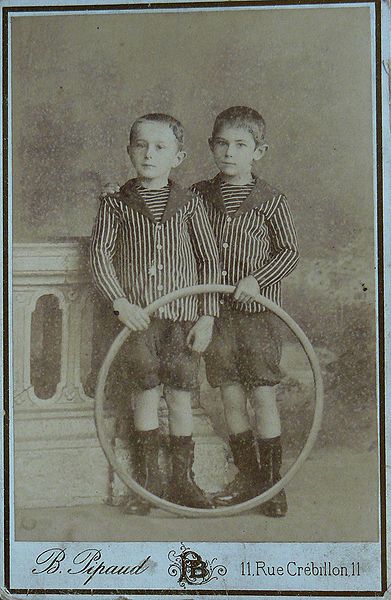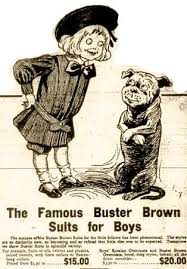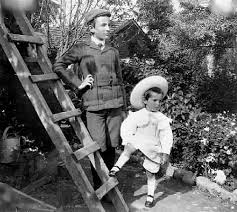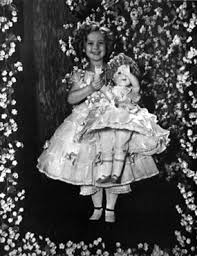We have previously blogged on men's fashion and accessories as well as the female counterpart. But what about the kids? We are encouraging EVERYONE to dress in turn of the century style! Initially children wore smaller versions of adult clothing, but as the turn of the century neared, their clothing began to change.
 |
| Sailor Suit |
Boys 1890 - 1930
 Small boys wore romper combination overalls and until they were around 5 years old. It was not unknown for boys of the same age to also wear little tunics that looked like dresses. There was an evolution of dress through a boy’s life: as a young boy he would wear a knickerbocker suit (or short trousers), then progressed to full suit (or long trousers). By the 1930s the change from short to long trousers was seen as a sign of manhood and was eagerly awaited by boys. One of the most popular looks (matching men of the era) was the Norfolk suit, with its high-buttoning jacket and integral belt. This was the standard daily wear for many well-dressed British boys as well as some American boys. Other suits for more affluent boys took their names from private schools like Rugby and Eton. The sailor suit was a popular choice until around 1920 when it was replaced with low waist tunics and shorts. Another popular look from 1916 to the 1940s was the 'Buster Brown suit' . This suit was a short smock-like suit, showing bloomer pants worn above the knee with long over the knee stockings. Most Buster Brown suits were worn with a broad white collar and large floppy bow sailor hat. These suits were worn by boys from about 5 to 8 years of age, but some mother’s dressed older boys in them for a few additional years. The traditional combination (vest and long johns) were worn underneath most suit coats, but they were replaced by short sleeved vests and pants around 1926. Caps and jackets remained popular and knitted jerseys became so, especially after the Great War.
Small boys wore romper combination overalls and until they were around 5 years old. It was not unknown for boys of the same age to also wear little tunics that looked like dresses. There was an evolution of dress through a boy’s life: as a young boy he would wear a knickerbocker suit (or short trousers), then progressed to full suit (or long trousers). By the 1930s the change from short to long trousers was seen as a sign of manhood and was eagerly awaited by boys. One of the most popular looks (matching men of the era) was the Norfolk suit, with its high-buttoning jacket and integral belt. This was the standard daily wear for many well-dressed British boys as well as some American boys. Other suits for more affluent boys took their names from private schools like Rugby and Eton. The sailor suit was a popular choice until around 1920 when it was replaced with low waist tunics and shorts. Another popular look from 1916 to the 1940s was the 'Buster Brown suit' . This suit was a short smock-like suit, showing bloomer pants worn above the knee with long over the knee stockings. Most Buster Brown suits were worn with a broad white collar and large floppy bow sailor hat. These suits were worn by boys from about 5 to 8 years of age, but some mother’s dressed older boys in them for a few additional years. The traditional combination (vest and long johns) were worn underneath most suit coats, but they were replaced by short sleeved vests and pants around 1926. Caps and jackets remained popular and knitted jerseys became so, especially after the Great War. 
Norfolk Suit: These clearly upper-class boys are brothers and are being photographed in the family garden. The older boy, wearing a Norfolk suit with knee trousers, long black stockings, and a flat cap is about twelve or thirteen. His little brother (about five or six) wears a white tunic suit with a fancy lace collar, a straw hat, white socks, and strap shoes
 |
| Pinafore |
Girls 1890 - 1930
Though earlier girl's undergarments were cumbersome, by the 1890’s separates (skirts and blouses) had become fashionable. Much like boy’s fashion, the sailor suits was also popular for girls as school or holiday wear from the 1890s until the 1920s.
 |
| Gymslip |
Yet dresses were still popular, In 1908 the liberty bodices, in knitted cotton fabrics, began to replace the tortuous corsets. Around 1910, the yoked dresses, with their high, modestly fitted waist and smock shape, came into vogue. The classic Pinafore was introduced in 1912, followed by the school gymslip in the 1920s. Following women’s fashions the waist dropped to hip level In 1919 and in by 1925 skirts and knickers rose to knee length. At the same time liberty bodices and vests were became sleeveless. The 1930’s saw the rise of the 'Shirley Temple look' of longer skirts, frills and flounces.
 |
| Shirley Temple |



No comments:
Post a Comment